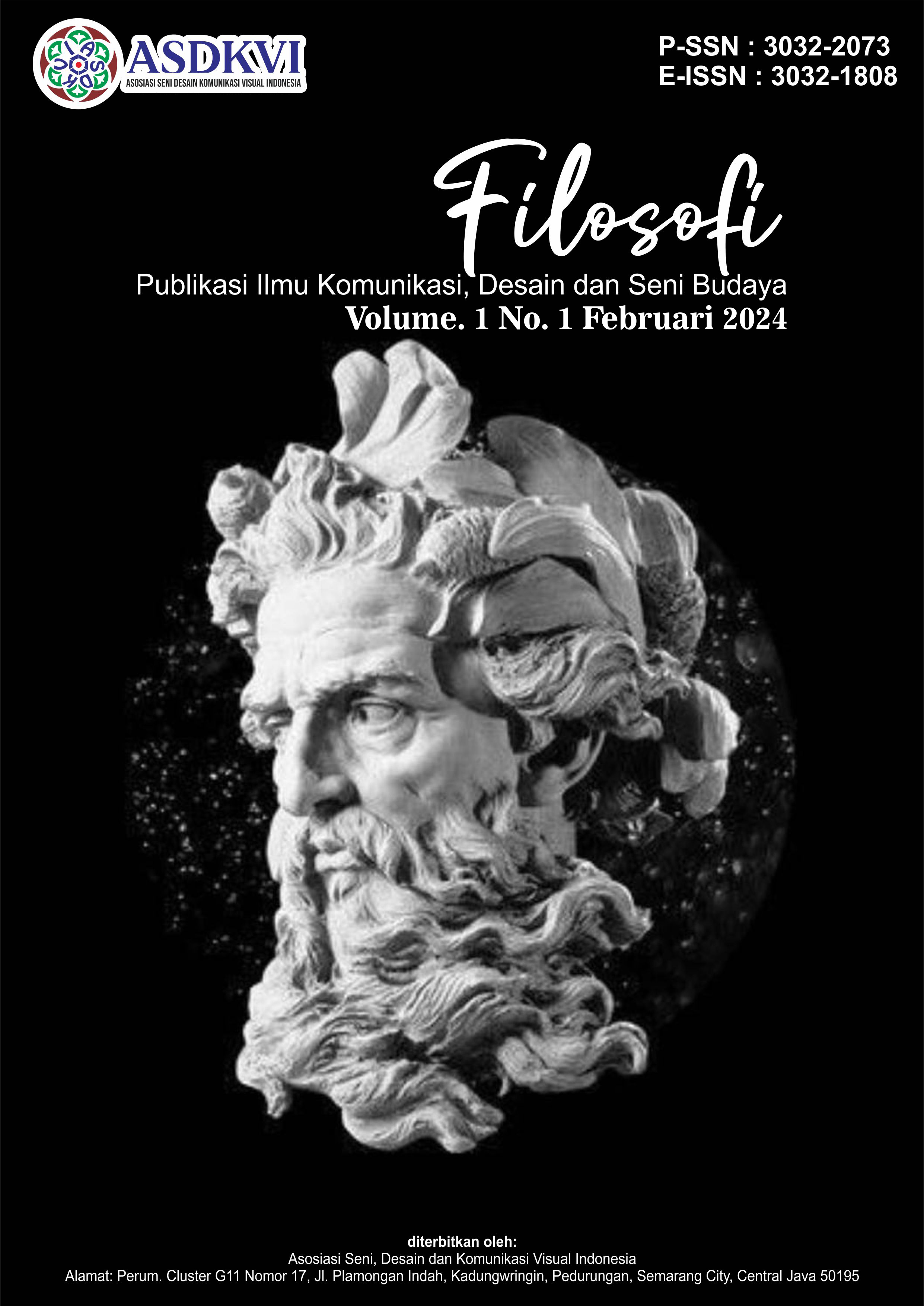Koreografi Tari Gamaro di Sanggar Seni Sari Bunian di Kanagarian Andaleh Kecamatan Sungayang Kabupaten Tanah Datar
DOI:
https://doi.org/10.62383/filosofi.v1i1.81Keywords:
Sari Bunian Art StudioAbstract
The purpose of this study is to reveal and describe the choreography of Gamaro Dance at Sari Bunian Art Studio in Kanagarian Andaleh, Sungayang District, Tanah Datar Regency. This type of research is quantitative research with descriptive methods. This research instrument is the researcher himself and is assisted by supporting instruments such as stationery and cameras. The data in this study used primary data and secondary data. Data collection techniques are carried out by means of literature studies, observations, interviews, and documentation. The steps of analyzing data are collecting data, describing the data and inferring the data. The results showed that this Gamaro dance has 3 parts, namely the beginning as the opening of the dance, the middle, and the end as the climax. In this Gamaro dance there are dance composition elements consisting of movement, floor design, group composition, upper design, dancers, music design, costumes and makeup and props. The movement worked on by the choreographer depicts the activities of residents who work as niro farmers. This dance work also looks very interesting with floor patterns and diverse group compositions so that the audience does not get bored in watching the performance and dancers who master strong movements and movements. The costumes used in the Gamaro dance are simple costumes. This Gamaro dance raised the theme of the activities of residents in Kanagarian Andaleh Baruh Bukik as niro farmers. The music that accompanies the dancer's movements uses a fast tempo until the end of the dance with drumming singing. The property used in Gamaro dance is niro tube or bamboo tube.
References
Ama, M. Hawkins. (1990). Mencipta Lewat Tari Yang Dialih Bahasakan Oleh Y. Sumandiyo Hadi. Yogyakarta ISI.
Indrayuda. (2013). Tari Sebagai Budaya Dan Pengetahuan. Padang : UNP Press.
Moleong, Lexi. J. (1986). Metode Penelitian Kualitatif. Bandung. PT Remaja Rosda karya.
Mukhtar. (2013). Metode Praktis Penelitian Deskriptif Kualitatif. Jakarta: Referensi. (GP Press Group)
Nazlen, C. B. M., & Darmawati, D. (2022). Perubahan Tari Makan Sirih Ke Tari Persembahan Melayu Riau Di Kota Pekanbaru Provinsi Riau. Jurnal Sendratasik, 11(1), 9-18.
Nerosti. (2019). Metafora Tari dalam Pendidikan. Padang: Sukabina Press.
Nerosti. (2022). Studi Tari Teks dan Konteks. Padang: Sukabina Press.
Parmita, M., & Darmawati, D. (2023). Pengembangan Tari Lamang Di Sanggar Bidodari Kanagarian Koto Gadang Guguak Kabupaten Solok. Student Scientific Creativity Journal, 1(6), 198-209.
Putri, N. N. A., & Darmawati, D. (2020). Analisis Garapan Tari Sanggar Seni Sarai Sarumpun Di Kota Padang. Jurnal Sendratasik, 10(1), 13-22.
Setiawati,Rahmida. (2008). Seni Tari Jilid 1. Jakarta : Direktorat Jendral Manajemen Pendidikan Dasar dan Menengah.
Soedarsono, R.M. (1999). Seni Pertunjukan Indonesia di Era Globalisasi. Jakarta : Direktorat Jenderal Pendidikan Tinggi Departemen. Pendidikan Dan Kebudayaan.
Sumandiyo Hadi, Y. (1999/2000). Seni Dalam Ritual Agama. Yogyakarta: Yayasan Untuk. Indonesia.
Downloads
Published
How to Cite
Issue
Section
License
Copyright (c) 2023 Filosofi : Publikasi Ilmu Komunikasi, Desain, Seni Budaya

This work is licensed under a Creative Commons Attribution-ShareAlike 4.0 International License.





